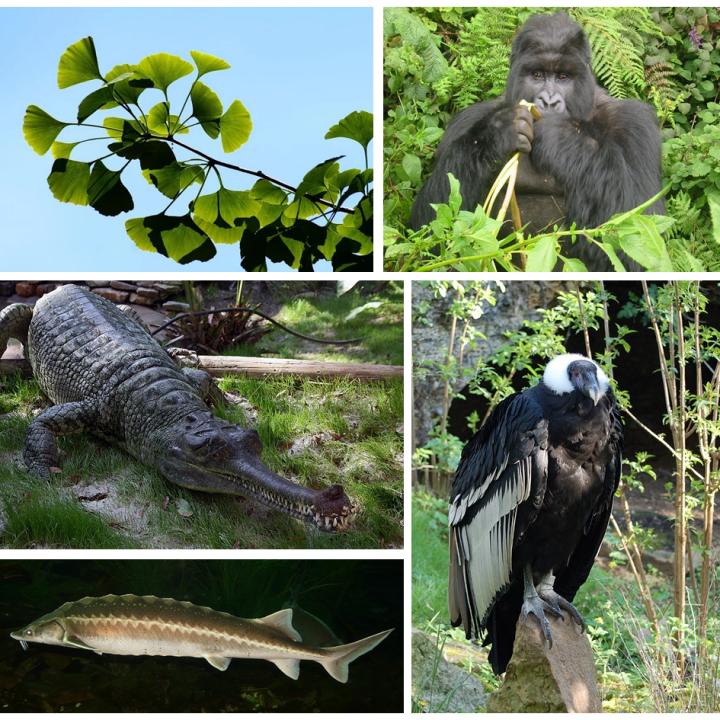One million species are under threat of extinction worldwide, primarily due to adverse human impact. The loss of a species is an ethical tragedy, but additionally, it can have dramatic effects on the functioning of ecosystems on Earth. In each ecosystem, species have their roles. These roles depend on the characteristics of the species, like their size, weight, shape, reproductive capacity or the food resources they use. If some species are similar, they can sometimes substitute each other and keep the ecosystem going even if one of them is lost. However, the accumulated loss of many species can lead to ecosystem degradation with a direct adverse effect on human well-being.
There are so many species that it is extremely difficult to generalize the global functional variation and understand the functional consequences of biodiversity loss. A research group from the University of Tartu took the challenge and compiled data on characteristics of more than 75,000 species of plants, mammals, birds, amphibians, reptiles, and freshwater fish. The unprecedented global summary of organisms’ functions was just published in Science Advances.
All species were projected onto a so-called functional space—a mathematical abstraction of their form and function. In this functional space, similar species are located close to each other, and dissimilar species are far apart. Overall, the functional space has some “regions” with plenty of species and others with just a few. The leading author, Dr. Carlos P. Carmona, says, “A very interesting result that we found is that, in all these groups, more than half of the species are responsible for less than 20% of the functions performed by the group, therefore implying that 80% of the remaining functions are performed by few species which are functionally unique.”
Some particular functions performed by a taxonomic group, such as plants, mammals or freshwater fish, may be shared among many species or only supported by a few species. For example, on a global scale, there are many species of grasses that have similar features and perform similar functions, but there are not many species with the features of a redwood. In the case of functions performed by many species, it is unlikely that the extinction of some of these species will strongly affect the functions of the whole group. On the contrary, if certain functions are performed by only one or a few species, their disappearance will lead to a reduction in the range of functions performed by the entire group.
The research group also explored how much we can lose from the functional space if these one million threatened species do go extinct. Dr. Carmona continues, “We wanted to explore how extinctions will affect the functioning of different groups of organisms. We found that large, long-lived, and low-fertility species are universally more likely to be threatened. This is bad news because we know that the largest plants and animals play a hugely important role in functions such as soil fertility, seed dispersion or carbon storage. Their extinction would therefore cause an overall reorganization of the range of functions performed.”
Since many species can substitute each other’s roles, the functional decline would be up to 5%, with the most dramatic losses happening to freshwater fish. This percentage is lower than the potential loss of species numbers. Still, it can have a major influence on the ecosystem services to humans, like clean air and water, soil fertility, our own food, medicines, building material, or good physical and mental health. In addition, a very large part of the functional space will rely on a much lower number of species, and possible subsequent biodiversity loss will already have a much more dramatic effect.
Dr. Carmona also has a clear suggestion to nature conservation authorities: “We propose that species providing unique trait combinations should have a top conservation priority because losing them would imply the complete disappearance of their functions from Earth.”
Extinction of threatened marine megafauna would lead to huge loss in functional diversity
More information:
“Erosion of global functional diversity across the tree of life” Science Advances (2021). advances.sciencemag.org/lookup … .1126/sciadv.abf2675
Carlos P. Carmona et al, Mapping extinction risk in the global functional spectra across the tree of life, (2020). DOI: 10.1101/2020.06.29.179143
Provided by
Estonian Research Council
Citation:
Functional consequences of global biodiversity loss guide future nature conservation (2021, March 26)
retrieved 26 March 2021
from https://phys.org/news/2021-03-functional-consequences-global-biodiversity-loss.html
This document is subject to copyright. Apart from any fair dealing for the purpose of private study or research, no
part may be reproduced without the written permission. The content is provided for information purposes only.



